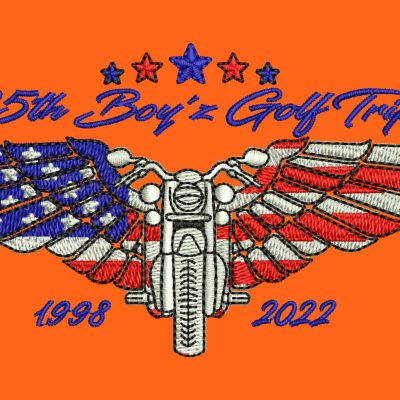Effective Digitizing for Embroidery: Quick Turn-around
Effective Digitizing for Embroidery: Quick Turn-around
Blog Article
Explore Different Sorts Of Embroidery Digitizing Methods
Needlework digitizing has progressed substantially throughout the years, offering a myriad of methods to bring layouts to life in the electronic world. From the intricate artistry of traditional hand needlework digitizing to the precision of the boxing technique, and the ease of auto-digitizing software application, the options are huge. Additionally, the realm encompasses a lot more innovative strategies like photorealistic embroidery digitizing and the interesting realm of 3D embroidery digitizing. Each method brings an one-of-a-kind set of possibilities and challenges to the table, making the expedition of these methods an engaging trip for those in the embroidery globe.
Standard Hand Needlework Digitizing
Conventional hand needlework digitizing involves the procedure of converting complex hand-stitched layouts into digital styles for machine embroidery. This technique calls for knowledgeable artisans to meticulously assess the handmade design and after that use specialized software program to recreate it in an electronic style. Each stitch, shade, and information must be very carefully translated to guarantee that the significance of the original hand needlework is preserved in the electronic variation.
Among the vital challenges of traditional hand needlework digitizing is capturing the ins and outs and subtleties of the handmade style. Digitizing for Embroidery. Craftsmens have to have a deep understanding of various embroidery methods, such as satin stitch, chain stitch, and French knots, to properly reproduce these methods in the digital world. In addition, they require to have an eager eye for detail to make sure that the digital layout keeps the very same level of virtuosity and craftsmanship as the original hand-stitched piece
Punching Method
To seamlessly shift from conventional hand needlework digitizing to the punching strategy, craftsmens must now concentrate on transforming the elaborate digital layouts right into directions that needlework machines can interpret. The boxing method involves making use of specialized software program to create digital files which contain commands for the embroidery machine to comply with. This procedure needs a deep understanding of not simply the style itself but likewise the capabilities and restrictions of the needlework machine.

Auto-Digitizing Software Programs
Needlework digitizing has been reinvented by the development of auto-digitizing software programs, supplying craftsmens with advanced tools to convert digital styles right into needlework device instructions effectively. Auto-digitizing software programs use algorithms to assess electronic photos or vector data and produce embroidery designs immediately. These programs allow for quick and precise conversion of detailed designs into stitch patterns, conserving effort and time for embroiderers.
One of the essential advantages of auto-digitizing software program is its straightforward interface, making it available to both beginners and experienced digitizers. These programs usually include functions such as stitch editing and enhancing tools, string shade matching, and the Full Article capability to sneak peek the final embroidered layout. Additionally, auto-digitizing software program can manage intricate styles with several colors and complex information, producing high-quality embroidery data appropriate for different apparel and textile tasks.
While auto-digitizing software supplies ease and effectiveness, it is vital for individuals to understand the constraints of automated digitizing. Fine-tuning and hand-operated changes might still be needed to attain the desired embroidery quality, particularly when handling elaborate or distinct styles. By leveraging the abilities of auto-digitizing software application alongside hands-on digitizing techniques, artisans can boost their embroidery digitizing process and develop magnificent stitched items.
Photorealistic Needlework Digitizing
Making use of sophisticated digital imaging methods, accomplishing photorealistic outcomes in embroidery digitizing has ended up being a sought-after ability among modern-day artisans. This strategy involves transforming high-resolution images into complex stitch patterns that carefully resemble the original style, resulting in needlework items that exhibit lifelike information and depth.
To attain photorealistic needlework digitizing, craftsmens have to have a keen eye for information and a detailed understanding of how various stitch kinds and thickness can affect the final outcome. By very carefully drawing up each color and shade click this link in the picture, embroiderers can develop a digital file that overviews the embroidery equipment to reproduce the subtleties of the initial picture precisely.
Photorealistic embroidery digitizing is specifically preferred in developing personalized styles for apparel, home design, and art pieces where recording the significance of a photo or artwork is essential. This method enables craftsmens to change memories, landscapes, portraits, and elaborate art work right into spectacular embroidered work of arts that showcase a blend of standard workmanship and cutting-edge modern technology.
3D Embroidery Digitizing
With the development of electronic imaging methods in attaining photorealistic outcomes in embroidery digitizing, the exploration of 'D Needlework Digitizing' offers a new measurement to the ins and outs of design replication. 'D Embroidery Digitizing' refers to the three-dimensional digitizing technique that adds depth and appearance to needlework layouts, producing a more realistic and aesthetically enticing final item. This strategy utilizes software application that imitates the result of light and shadow on the embroidery layout, improving its total visual check my reference influence.
One of the essential benefits of 'D Needlework Digitizing' is its capacity to make styles look more realistic and dynamic. By including deepness to the needlework layout, the end product appears a lot more practical and captivating (Digitizing for Embroidery). Furthermore, this method permits even more creative freedom in style execution, enabling embroiderers to try out various appearances and effects that were formerly challenging to accomplish
Verdict

Report this page